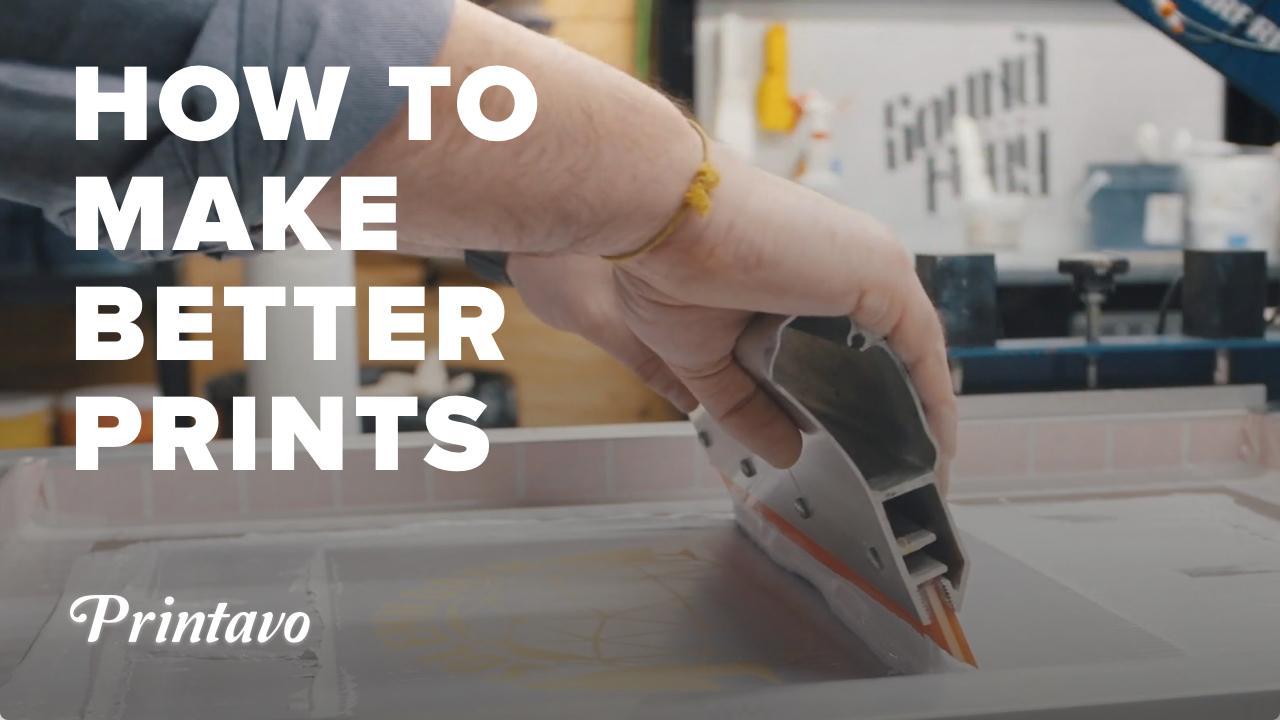Some Known Details About Tx Tees
Some Known Details About Tx Tees
Blog Article
Indicators on Tx Tees You Need To Know
Table of ContentsThe Only Guide to Tx TeesSome Of Tx Tees5 Simple Techniques For Tx TeesSome Known Questions About Tx Tees.Getting My Tx Tees To WorkThe smart Trick of Tx Tees That Nobody is DiscussingAn Unbiased View of Tx Tees
Add up various other expenses, like the number of utilities it takes to run the store and the cost of ink and solution per style. Take the print listed below.The emulsion should just be a couple of cents considering that you 'd just require to coat one screen for this task. Usually, printers attempt to make up to 45% earnings on a print job.

With DTF, you can print a handful of t shirts, or simply one. Utilize the exact same calculator as the section over to determine just how much earnings you would certainly use DTF transfers. Contrast the costs and earnings to whichever approach speaks best to your configuration and process. Both screen printing and DTF have their niches in the globe.
9 Easy Facts About Tx Tees Shown
The best method to recognize? Ask about and see what printing shop like your own are doing. custom cap printing. Try both out and see which you like better
When you're picking what type of printing technique to make use of for publishing your artwork layouts on your garments, it is very important that you understand the distinctions in between these 2 techniques so you can make best use of outcomes while minimizing costs. Screen printing is the most frequently utilized method for publishing layouts on fabrics.
DTG printing is additionally referred to as spot or straight to garment printing because it prints only what is needed rather than making a screen as screen printers do. https://www.callupcontact.com/b/businessprofile/TX_Tees/8988532. Display printing functions by display filler squeegee screen printing ink display mesh screen, then transferring the image to garment making use of heat and/or stress
The DTG printer utilizes special dye-sublimation inks that are used into a pre-designed photo by a digital printing system. The inks become component of the textile, permitting vivid shades and remarkable information. It's also referred to as spot or straight to garment printing because it publishes only what is required rather than making a screen as display printers do.
The Of Tx Tees
It's much faster - you can publish a fullcolor photo in mins, as opposed to hours for display printing. Second, there's no established up time or prices involved - you can print any style you such as, without needing to produce a screen initially. Third, there's no waste - because screen printers screen print one style each time, they have to screen each color separately.
The paper is very expensive and can only be utilized when. Once it's printed on, it needs to be discarded. - The first acquisition rate is less than the ahead of time investment of DTG printers- You can publish multi-color layouts one display each time rather of needing to publish each shade individually like DTG printing.

The Basic Principles Of Tx Tees
Nevertheless, rather than making use of display mesh as display printers do, dye sublimation printers make use of laser innovation to move your images onto garments or paper. A warm process moves the color from its solid-state directly into the gas phase which subsequently fuses it onto material substrates when they are swiftly warmed to high temperatures under high stress.
Sublimation printing is environment-friendly. It makes use of less water than screenprinting, and because it does not include the usage of hazardous solvents, it's risk-free for all types of apparel. The dye sublimation inks are likewise unsmelling when healed, unlike display printers that make use of harmful chemicals during the screen printing process that leave behind an unpleasant odor.
They likewise save money on costly equipment like exposure units because dye sublimation printers do not call for a UV direct exposure device or a flash treatment stove that is generally made use of in display printing (embroidery shop). What is straight to garment printing (DTG Printing)? DTG printing is a digital screenprinting process that publishes straight onto textile utilizing specialized inkjet printers
The Buzz on Tx Tees
DTG printing offers several benefits over standard screenprinting, including the capacity to print photographic quality photos, greater color vibrancy, and the ability to publish styles on darker materials. DTG printers function by heating up the fabric ink up until it turns into a gas. The gas after that permeates the textile, bonding with the fibers to create a long-term print.

Display printers merely prepare their display after that begin publishing up until they lack item or ink.- There is a large range of knowledgeable display printers around the world, which can be useful for beginners. - It's a slower process - screen printers often need to wait on the ink to dry prior to they can publish the following shade- Screen printers need manual labor, so there's a higher knowing curve and it takes longer to create a premium design- Display printing isn't as accurate as DTG printing, so you may obtain some "bleeding" of colors from one component of the picture onto one more if not done effectively.
The smart Trick of Tx Tees That Nobody is Talking About
Nevertheless, as opposed to using display mesh as display printers do, dye sublimation printers make use of laser innovation to move your pictures onto garments or paper. A warmth procedure transfers the color from its solid-state directly into the gas stage which subsequently fuses it onto textile substrates when they are quickly warmed to high temperatures under high stress.
Sublimation printing is environment-friendly. It uses this article less water than screenprinting, and since it does not involve the use of harmful solvents, it's risk-free for all kinds of garments. The dye sublimation inks are likewise odor free when treated, unlike display printers that use dangerous chemicals throughout the display printing process that leave behind an undesirable smell.
They additionally conserve money on expensive devices like direct exposure devices since dye sublimation printers don't require a UV exposure system or a flash remedy oven that is commonly used in screen printing. What is direct to garment printing (DTG Printing)? DTG printing is a digital screenprinting process that publishes directly onto fabric utilizing specialized inkjet printers.
The Ultimate Guide To Tx Tees
DTG printing supplies several advantages over typical screenprinting, consisting of the capability to print photographic quality pictures, higher color vibrancy, and the ability to publish layouts on darker textiles. DTG printers function by heating up the textile ink until it becomes a gas. The gas then permeates the material, bonding with the fibers to create an irreversible print.
Report this page